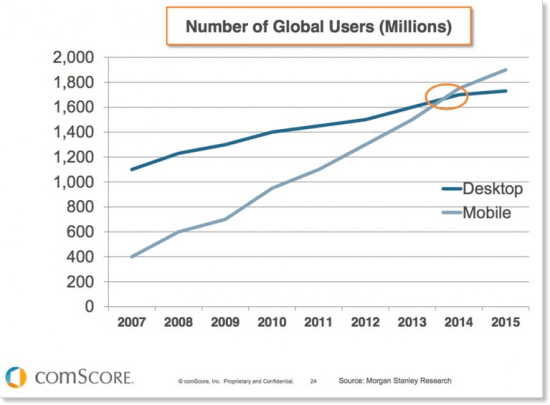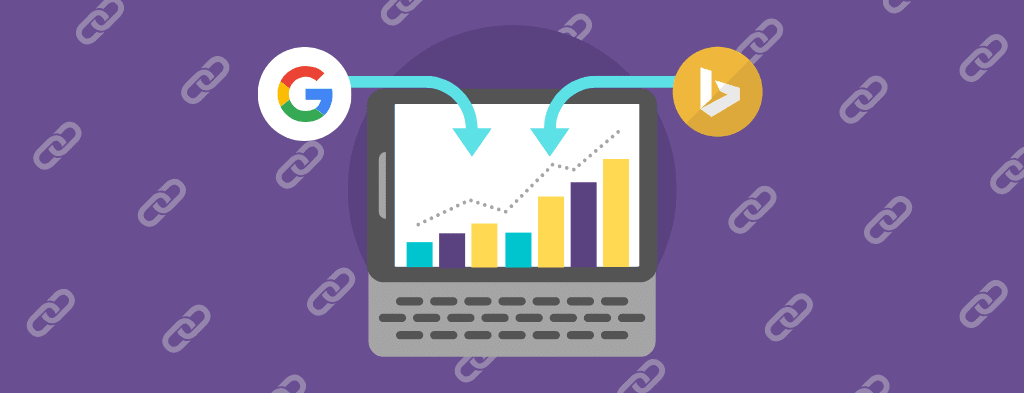Back in November Google announced it was going to roll out a new index and a new “way of working”. It’s now live across the entire Google Network and it’s called the Google Mobile First Index.
One common question or comment I’ve heard is: Why? Why Google WHY?
Businesses & Marketers often get frantic and panic when these major changes are rolled out, even though these changes do indeed happen on a very regular basis.
There was the Caffeine Roll Out, then Penguin, Penguin 2.0, Pegnuin 3.0 and now the Mobile First Index.
Why The Google Mobile First Index?
Mobile device use is growing, and it’s growing like crazy. This is far outpacing desktop and laptop devices and also growing much more quickly than tablet devices.
We also do not need to talk about why that is the case. How far away is you mobile device from you right at this moment?
It’s probably in your hand right now as you read this or within arm’s reach.

Because of the massive (and consistent) growth that we can see above, Google rightly wants to present search results specifically designed for mobile devices and likewise for desktop searches.
We can imagine a few simple instances where this makes a ton of sense. But the real questions is: how will this impact my Digital Marketing & Search Optimization Strategy?
What will I have to do differently?
What The Google Mobile First Index Means To You
Let’s breakdown in simple terms what the Google Mobile First Index (should) mean to you:
- Google now has two entirely unique versions of their index: one for mobile and one for desktop.
- Ranking in one index will have different signals and optimizations than the other.
- The mobile index is the “first” or most important Google index.
- The mobile index values page load speed. This ongoing signal now gains additional strength.
- Accelerated Mobile Pages or AMP optimized content becomes much more important to implement properly for your domain.
- Your responsive and mobile site must be treated uniquely and optimized for the Google Mobile index.
- Mobile-friendly websites matter, regardless of technology. Google has previously indicated their preferred method of a mobile-friendly website was responsive design.
- SERPs (Search Engine Result Pages) will now be primarily based on mobile content. Today, if you have a page that shows some specific content to desktop visitors, but excludes content for mobile visitors, you may notice a change in results because of the mobile-specific content. Results will start to use mobile content first, consider what, and how much content, to add to your mobile version.
The introduction of the Mobile First Index is a critical change for Google and will change the way we all create, optimize, create content for our web properties.
We treat Site Optimization here at Honeypot Marketing as an on-going, never-ending always evolving process, we’ve been doing it this way for 15 years and theses adjustment are no different than the thousands of changes Google has made over the years.
Interested in learning more about how we generate leads, build relationships and brands through processes like Search Engine Optimization? Drop us a line today, we’d love to talk to you and learn more about how we can help you build your business.
Want to more Google Mobile First Index Goodness? Check Out These References:
Google’s Announcement: https://webmasters.googleblog.com/2016/11/mobile-first-indexing.html
Index Divide and Impacts: http://www.advancedwebranking.com/blog/google-mobile-index-what-it-means-for-seo/
Case studies and real observations: http://searchengineland.com/finally-going-mobile-friendly-collision-course-googles-mobile-first-index-case-study-265227





Responses
[…] Now, this is a big one. So big, in fact, that we covered it in a blog of its own, which you can find here! […]
[…] Worried About the Google Mobile First Index? We Can Help. […]
[…] Now, this is a big one. So big, in fact, that we covered it in a blog of its own, which you can find here! […]